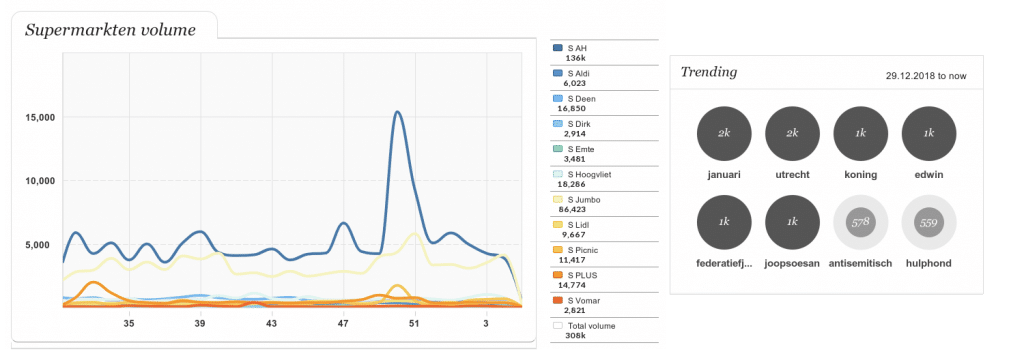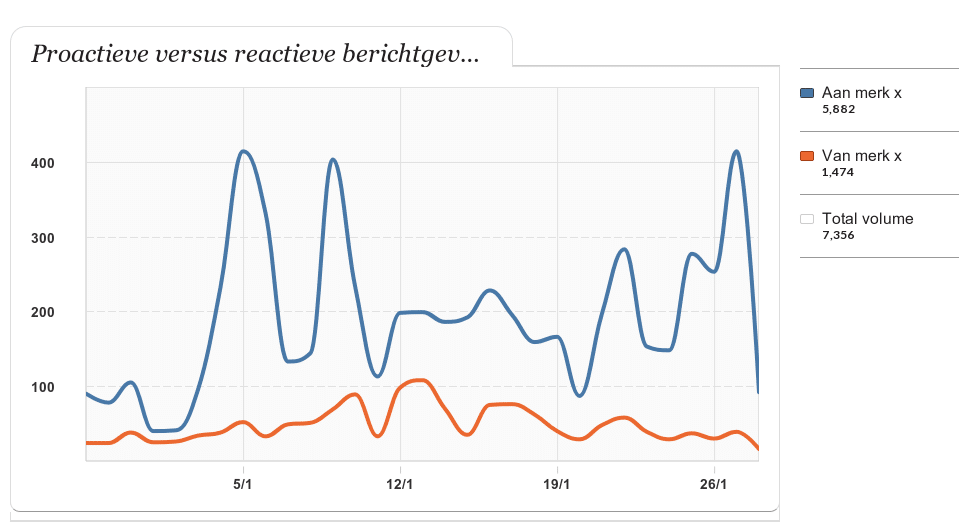6 tips for data-driven reputation management

Communications and marketing departments have a large amount of data at their disposal. From opinion and reputation scores to brand index pulses, media value and reach. This data provides the basis for reputation management. However, given the sheer amount of available data, it is easy to get lost and no longer see the forest for the trees. But how do you get a clear picture on your company’s reputation and get the most out of your data pile? This article provides six tips for converting data into actionable insights to boost your company’s reputation.
You can’t manage what you can’t measure
Many organisations already work in a data-driven way. They analyze their social media performance on a daily or weekly basis. KPI’s such as engagement rate, number of followers and reach are checked. Social media monitoring tools provide real-time insights on what topics are currently trending within the target audience or important stakeholders and influencers. Next to that, organisations keep a close eye on customer service response times and apply the NPS (net promotor score) as an indicator for customer satisfaction. The volume of incoming messages is monitored year round and used as a predictor for staffing needs. The communication lines between the customer service and communication departments are short so that important events or issues can be reported directly.
Connecting the dots
Putting all the available information together into one comprehensive overview on how the company is performing and perceived by the outside world is remaining difficult and demands specialized experts. As a communication professional you might be looking for that one button to press that will improve your company’s reputation instantly. Unfortunately it’s not that simple but also not over complicated. First of all, you need to identify a few key factors in the available data. The next step is vital! You need to connect the dots so that you get the full picture. The tips below provide skills you need to apply in your (partially automated) structural reputation analysis.
Tip 1: Look beyond volumes for a holistic reputation management
An increase in the volume of incoming messages and comments on social media could have many underlying reasons. Someone could repeatedly send out the same tweet or receive many retweets, there may be a prize draw or your organisation could be mentioned in the context of a relevant topic. If you see changes in the volume of messages, it is important to always perform an analysis: what are the trending topics? Was there a change in sentiment of the messages? Were any stakeholders involved?

It’s a good idea to also look beyond just volume. An issue could have a big impact without necessarily being large in terms of volume. Here, reach, source category and source are important parameters you should consider in your analysis. Include newspapers, radio, tv, as well as high impact sources such as industry specific blogs.
Tip 2: Measure your core values
Your corporate communications strategy was created for good reasons. Ideally, the core values that you have defined within that strategy will show up in your reports. This is important because it shows if your organisation is perceived in line with your values by the public. Social media monitoring tools make it relatively simple to measure these values in a structured way: map the keywords that are being used in relation to these values, track these keywords on (social) media and perform your analysis on that basis. Keep a close eye on the sentiment around these core values, as any change might indicate an important issue.
Tip 3: What is the impact of your press releases?
A personal favourite: monitoring the impact of press releases. Writing and publishing press releases is a major job component of corporate communications professionals and spokespersons. You probably have a general idea on how much media attention a press release will get and maybe you even have someone in your team who regularly creates overviews of your press coverage. However, proper monitoring of the impact of press releases is often lacking, meaning you loose out on gaining important insights that could help you to optimise your PR strategy.
-
● Which media pick up which topics?
● Which topics perform really well?
● Which press releases contribute to a shift in sentiment on social media?
Want to know more about PR and how to create effective press releases? Check out this article on best PR tips for 2020.
Tip 4: Distinguish proactive from reactive coverage
Proactive versus reactive coverage is another important parameter to look out for. Mapping this in a structured manner will give you a clearer picture of which coverage just ‘çomes your way’ as opposed to coverage that you can control to a certain extent. This will contribute to your strategy. Pay close attention to hashtags and mentions related to your organisation and how these relate to content that was pushed out from your corporate accounts.

Tip 5: Industry expertise. What are the hot topics and what is their impact?
(Social) media monitoring is not limited to just your own organisation. Brand reputation stretches beyond the brand itself, as it could be impacted by the reputation of an entire industry. A crisis at organisation X within your industry, could lead to an increase in online conversations about organisation Y (your organiation). As a communications professional, understanding which issues are impacting the industry as a whole, will help you to influence these conversations or divert attention away from them.
Tip 6: Monitor key stakeholders
As a communications professional you have mapped your key stakeholders and you generally have a good sense of the sentiment surrounding certain issues. Now try to take the next step: can you group the stakeholders? Do you discover any trends from doing that?
To illustrate, let’s take an internal issue. It doesn’t take much for an issue like that to be picked up externally. By monitoring the sentiment and discussions within your organisation, you will be better prepared when this kind of situation occurs. Platforms like Yammer are increasingly part of the monitoring Spotler Engage performs for its clients. The intention is not to control or judge staff members’ communications, but rather to have a constant temperature check of internal issues and conversation topics.
The human aspect of monitoring will always be important, but the right tools and strategy will make it easier. Hopefully these tips will help you get the most out of your available data so that you can give your brand reputation a real boost.
Would you like to know how reputation management can help your companies in times of crisis? Then read this article and check if your crisis management is up-to-date.